You may use
numpy.piecewise
numpy.piecewise allows to define a function dependent on some conditions. Here you have three conditions [x<0, x>=1, (x>=0) & (x<1)], and you may define a function to use for each of them.
import matplotlib.pyplot as plt
import numpy as np
l1 = lambda x: 0.3 + x * 0
l2 = lambda x: 0.2 + x * 0
l3 = lambda x: 0.5 + x * 0
mapDiscProb=lambda x: np.piecewise(x, [x<0, x>=1, (x>=0) & (x<1)],[l1,l2,l3])
x = np.linspace(-1, 2)
y = mapDiscProb(x)
fig, ax = plt.subplots()
ax.plot(x, y, clip_on = False)
plt.show()
numpy.vectorize
numpy.vectorize vectorizes a function which is meant to be called with scalars, such that is evaluated for each element in an array. This allows if/else statements to be used as expected.
import matplotlib.pyplot as plt
import numpy as np
def mapDiscProb(x):
if x < 0:
return 0.3
elif x >= 1:
return 0.2
else:
return 0.5
x = np.linspace(-1, 2)
y = np.vectorize(mapDiscProb)(x)
fig, ax = plt.subplots()
ax.plot(x, y, clip_on = False)
plt.show()
numpy.select
(credit to PaulH for this idea) numpy.select can choose select values from different arrays based on a condition. For piecewise constant functions this is an easy tool, because it does not require to build any additional functions (one-liner).
import matplotlib.pyplot as plt
import numpy as np
x = np.linspace(-1, 2)
y = np.select([x<0, x<1, x>1], [0.3, 0.5, 0.2])
fig, ax = plt.subplots()
ax.plot(x, y, clip_on = False)
plt.show()
Output in all cases:

No vertical lines
In case you don't want any vertical lines to appear, it makes sense to plot as many plots as you have conditions.
import matplotlib.pyplot as plt
import numpy as np
l1 = lambda x: 0.3 + x * 0
l2 = lambda x: 0.2 + x * 0
l3 = lambda x: 0.5 + x * 0
x = np.linspace(-1, 2)
func = [l1,l2,l3]
cond = [x<0, x>=1, (x>=0) & (x<1)]
fig, ax = plt.subplots()
for f,c in zip(func,cond):
xi = x[c]
ax.plot(xi, f(xi), color="C0")
plt.show()

Alternatively, using numpy.select, you may modify the x array to surely include the values [0,1], which lie on the edge between conditions. Choosing the conditions to exclude those values explicitely, [x<0, (x>0) & (x<1), x>1] (note the lack of any equal sign) will allow to set those values to nan. Nan values are not shown, hence a gap appears.
import matplotlib.pyplot as plt
import numpy as np
x = np.sort(np.append(np.linspace(-1, 2),[0,1]))
y = np.select([x<0, (x>0) & (x<1), x>1], [0.3, 0.5, 0.2], np.nan)
fig, ax = plt.subplots()
ax.plot(x, y)
plt.show()

